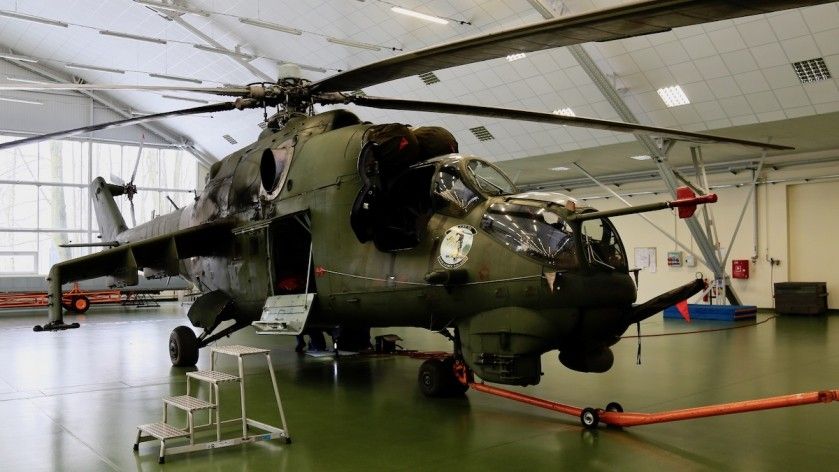No Decision In the Polish Kruk Attack Helicopter Acquisition Programme. Mi-24 Upgrades - Still Being Analysed

The Polish Kruk attack helicopter acquisition programme seems to be dragging on. The analysis checking whether “Basic National Security Interest” applies to the matter has been going on for 4 years now which effectively hampers any action with regards to the project. When it comes to a gap filler solution: modernization of the Mi-24 platform; results of the analytical-conceptual phase are subject to final arrangements. PZL-Świdnik has also been carrying out fatigue tests of a Mi-24 airframe since October 2019. The results of these would be crucial in the potential modernization of the aircraft.
A few years back acquisition of the Kruk attack helicopters has been defined as one of the modernization priorities. These platforms would constitute a major reinforcement of the Polish anti-tank capabilities, and this has been a priority at the time. According to the spokesman of the Armament Inspectorate, Major Krzysztof Płatek “Assessment of the emergence of the Basic National Security Interest within the task regarding the acquisition of two attack helicopter squadrons, within the framework of the Kruk programme, has not been completed. Further work on these tasks depends on the Security Interest assessment results.
The above means that the MoD has still been unable to accomplish the assessment procedure with regards to the emergence of the Basic National Security Interest. And this procedure is decisive for the shape of the procurement process that could be adopted in the Kruk programme. The entities involved in the process have not defined the procurement procedure type - whether it shall be done via a tender, or without competitive procedures, for instance on the grounds of an intergovernmental agreement.
The Mi-24 helicopters currently operated by the Polish military have no ATGMs at their disposal. They only utilize post-Soviet unguided missiles and gun pods, as well as .50-cal. machine gun mounted in the nose turret. This renders the platform in question incapable of fighting main battle tanks effectively. Mi-24 that Poland uses also cannot precisely strike most of the targets, especially the moving ones. Furthermore, spare parts inventory for the four-barrel machine guns is also limited, which means that there is a risk that another piece of ordnance would be lost. Other problems include obsolete avionics and optoelectronics, or weak performance of the old engines, especially in a hot and high operational setting.
Some information appeared recently, that modernization of the Mi-24, involving a lifecycle extension, has been planned. In the light of the delays in the Kruk programme, this matter becomes crucial. Not only should the above be done for the sake of maintaining the operational capabilities of the Armed Forces within that scope, as relevance which is even more critical concerns the aircrew training.
We have received a response as follows when we asked when the agreement concerning the modernized Mi-24 would be signed and when deliveries could be expected:
According to decision No. 141/MON made in July 2017, the Polish Ministry of Defence is currently in the process of getting to an agreement on the results achieved through the analytical-conceptual phase analysis. I would like to point out that resultant documents of the analytical-conceptual phase are confidential.
The arrangements could last for at least a few more months. This is because fatigue tests of a Mi-24D airframe would not be completed until 2021. These tests have been carried out since last year at PZL-Świdnik. Their goal is to “confirm the fatigue durability that ensures that the helicopter can fly for 5,500 hours and carry out 14,000 landings”, as a description of the order issued in September 2019 specifies. Only then will it be possible to establish whether an upgrade programme would be justified, with consideration given to the expected period during which the helicopters would see operational use in the future. This means, in turn, that potential modernization of the Polish Hinds can begin in 2021. Deliveries of the modernized aircraft shall be expected 2 to 3 years later.
Delays in the Kruk programme and postponement of the Mi-24 upgrade program (it had been planned to be carried out in 2019 already) create an even broader gap in the Army aviation anti-tank capabilities. The manufacturing, procurement and training processes expected in case of the new attack helicopters, aimed at establishing operational readiness, is a process that would take years to complete. In case of the Polish military – this process has not even seen its beginning. First, it happened due to the multi-role common platform helicopter programme, and then, due to the indecisiveness and the procurement priority shifting.
